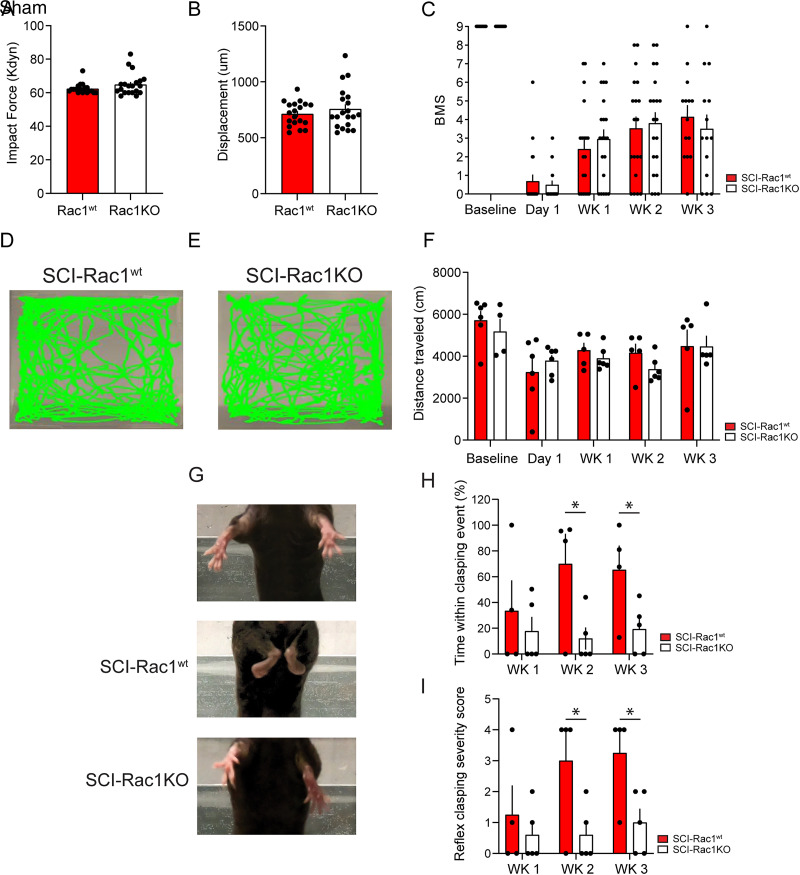Figure 2.
Rac1KO in astrocytes did not alter recovery after SCI. A, B, Biomechanical impact data provided by the Infinite Horizon device demonstrates that SCI-Rac1wt and SCI-Rac1KO groups received consistent injuries. C, Blinded observers performed BMS testing at baseline and weekly following SCI (Wk1-Wk3). Both SCI-Rac1wt and SCI-Rac1KO groups recovered equally over a 3-week period. D–E, Representative images of exploratory behavior in an open field over 30 min. F, Rac1KO did not impact activity in the open field after an injury, and animals from SCI-Rac1wt and SCI-Rac1KO groups displayed a reduced distance traveled (n = 4–6 per group). G–I, SCI-Rac1KO animals displayed less reflex clasping behavior 2–3 weeks post-SCI compared to SCI-Rac1wt (n = 4–5 per group). G, Representative images showing reflex clasping behavior in SCI-Rac1wt, which was not observed in Sham animals and occurred significantly less in animals with astrocytic Rac1KO. H, SCI-Rac1wt animals showed an increased severity of hindlimb clasping 2–3 weeks after SCI as compared to SCI-Rac1KO (*p < 0.05). I, SCI-Rac1wt spent a greater percentage of time within a clasping event compared to SCI-Rac1KO (*p < 0.05). Graphs are mean ± SEM.

